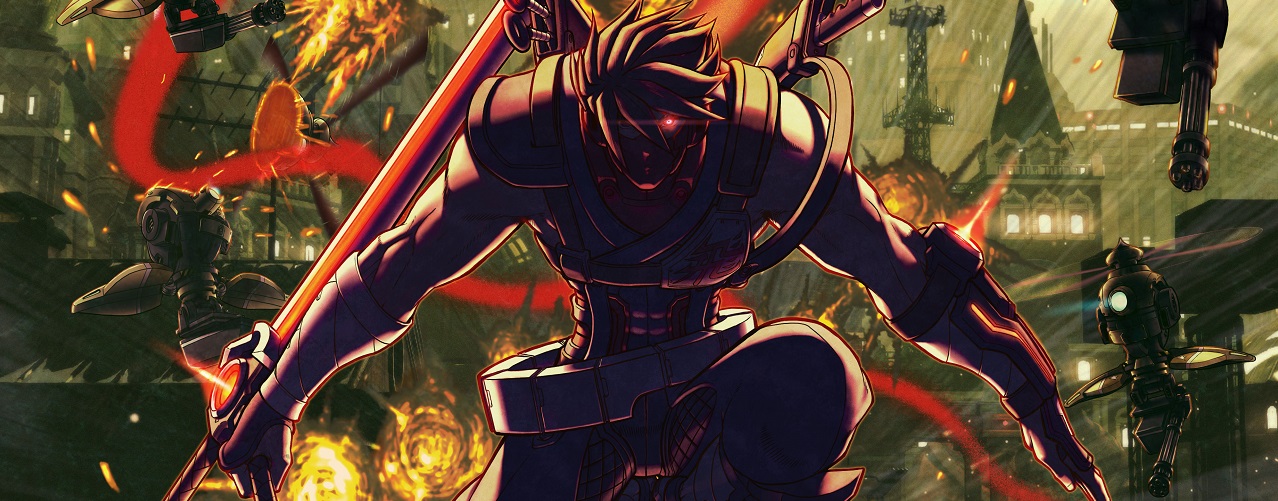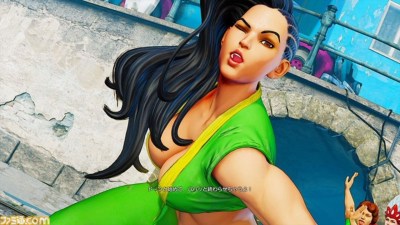Back in 1989, a little game called Strider debuted in arcades. If you don’t remember arcades, they were these dingy little spaces crammed full of game cabinets, all of them hungry for your spare change in return for 5 minutes of fun. Of all the games developers plying their trade in these sadly long-forgotten establishments, Capcom was the undisputed king. From Sunset Riders to Ghouls and Ghosts, at times it felt as though the company could do no wrong - and with Strider, they arguably perfected the fast-paced platformer. It wasn’t until Sonic The Hedgehog was released two years later that gamers were presented with a game more demanding of their reflexes.
A couple of console ports and a sequel later, Strider is back, this time as a metroidvania-style game developed by Double Helix and released on digital marketplaces. The games industry has changed immeasurably since protagonist Strider Hiryu’s debut, but has the franchise moved with the times, or is still clinging to the past?
The answer is something of a double-edged sword. While the game’s aforementioned metroidvania structure is a sign of progress, the core gameplay is decidedly retro. Often brutally unforgiving yet relatively simple in its mechanics, Double Helix’s reinvention of the franchise sometimes feels uncertain as to which audience it wants to cater for.
From the outset, the game moves at a brisk pace - enemies appear from all directions at an alarming rate, your avatar runs at high speed, and upgrades to your toolset are never far away. While your initial repertoire of skills is slim, before long you’ll have gained the ability to charge up your sword slashes, summon a flaming bird to burn your enemies to a cinder or surround yourself with damage-absorbing orbs. Strider can certainly dish out damage, but he remains vulnerable. Your health bar is short to start with, and although it can be increased over time through finding some well-hidden pickups, you never quite reach the point where the game lacks challenge - particularly on higher difficulties, which will see you frequently dying and restarting.
While a high level difficulty isn’t in itself a bad thing - Dark Souls is an example of a sadistically challenging game that nonetheless remains compelling from beginning to end - Strider often manages to irritate. Bullets will come flying your way from enemies you can’t see, and collision detection sometimes feels a little off. In addition, checkpoints are infrequent and you’ll repeatedly find yourself having to replay the same five-or-ten minute sections over and over again, simply because the developer forgot to implement a checkpoint just before a boss. It also doesn’t help that so many of the cutscenes are unskippable, forcing you to sit through them time and time again - particularly irritating given that they tend to bookend each boss encounter.
Speaking of those bosses, the artists at Double Helix clearly enjoyed themselves during the design process. Featuring a combination of new designs and revisions of classic enemies from the original games, they’re presented with a pleasing anime aesthetic that wouldn’t look out of place in a Saturday morning cartoon show. The use of cel-shading only adds to this look, and while up-close in cutscenes some of the textures and detailing can look a little ropey, during gameplay Strider is frequently gorgeous to look at and usually beautifully animated. Controls are also fluid and responsive, essential for such a fast-paced experience that demands quick reflexes.
One other slight disappointment is that while the game essentially mimics the free-roaming exploration of games such as Super Metroid and Castlevania: Symphony of the Night, environments in Strider are broken up into discreet areas. It doesn’t significantly harm the gameplay, but it does result in a world that never quite feels as coherent as it should. You’ll move from vast military complexes to the city rooftops, but the shift in the environmental design is often jarring rather than organic. It feels very much like you’re playing a videogame pieced together from various different bits of concept art, rather than inhabiting a believable world. Not a deal-breaker then, but slightly disappointing nonetheless.
Essentially a retelling of the first game’s story, Strider sees you infiltrating a Soviet-esque country in order to bring down a power-mad dictator. It’s pretty forgettable fare, but then the game doesn’t need to compete with Trotsky - the enjoyment comes from its fast-paced gameplay, not its narrative framework. Cut-scenes are frequently cheesy, with exaggerated accents and over-the-top dialogue. Oddly, character models suffer from a complete lack of facial animation - it’s difficult to decide whether this was a deliberate attempt to evoke a bygone era, or whether the developer’s budget or timescale simply didn’t extend to lip-synching. Thankfully though, these cutscenes are brief and never threaten to tarnish an otherwise highly enjoyable experience.
Beyond the dialogue, sound effects are fairly standard fare - guns go bang, swords go swish, etc. But it’s the music that sticks in the mind: featuring a large number of remixes of classic franchise tunes, the game’s soundtrack combines with the character design to result in a game which pushes the nostalgia button at every turn. Fans of the previous games are well catered for here, and some of the remixes are absolutely phenomenal.
Despite a few complaints, Strider remains highly enjoyable throughout. The addition of plenty of secrets, unlockables and a New Game Plus option also extend an already generous 6-8 hour running time - make no mistake, Strider definitely provides plenty of bang for your buck. Considering that it has been released as a budget-priced downloadable title, you may have been forgiven for thinking that it wouldn’t deliver much in the way of content; but the truth is that there’s more substance on offer here than in many full-price retail releases.
As a developer, Double Helix initially became known for all the wrong reasons - there’s more than a few turkeys in its back-catalog; but between their excellent reinvention of Killer Instinct, and now their work bringing Strider up to date for a modern era, they’re quickly making up for previous failures.
You could say that their work is coming along in strides.


